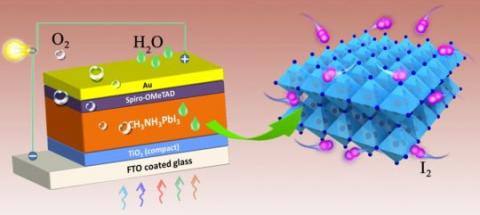Researchers at OIST (Okinawa Institute of Science and Technology) have been investigating the cause of rapid degradation of perovskite solar cells. Their conclusions suggested that the degradation of MAPbI3 perovskites may not be a fixable issue, since iodide-based perovskites produce a gaseous form of iodine, I2, during operation, which in turn causes further degradation of perovskite.

In contrary to many researchers that have pointed to external sources (like moisture, atmospheric oxygen and heat) as the cause of MAPbI3 degradation, the fact that these solar cells continue to degrade even in the absence of these factors led the OIST team to believe that a property intrinsic to these cells was causing the breakdown of material.
The research, however, does not rule out the probability of using perovskites in solar cells. The team explains that "our experimental results strongly suggest that it is necessary to develop new materials with a reduced concentration of iodine or a reinforced structure that can suppress iodine-induced degradation, in addition to desirable photovoltaic properties."
The researchers at OIST are continuing to investigate different types of perovskite materials in order to find more efficient, cost-effective, and long lifespan perovskite material suitable for use.

